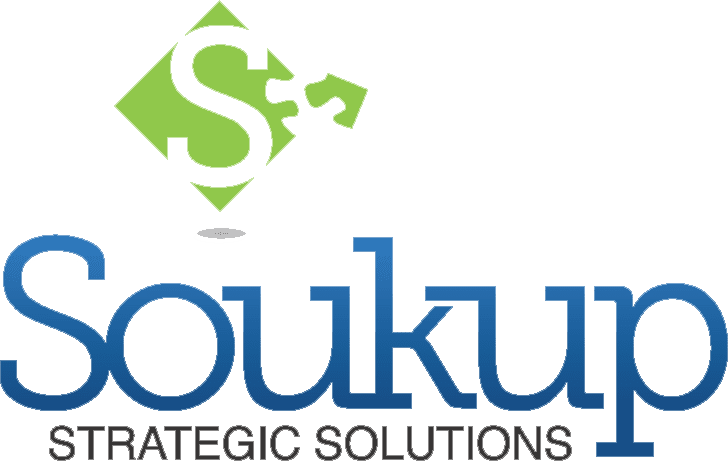Time is the great equalizer—it is the one resource that remains constant, non-renewable, and universally limited. Unlike financial capital, which can be raised, or talent, which can be developed, time can neither be expanded nor retrieved once lost. It dictates the scope of achievement, the pace of progress, and the ability to make meaningful impact. Time management for nonprofits is essential to maximizing productivity, sustaining donor relationships, and ensuring mission-driven success. It is not just about staying busy—it is about making intentional choices that align with organizational goals.
If there is one truth that nonprofit professionals must embrace, it is that time must be managed with the same discipline and intentionality as any other critical resource.
The Value of Time: Lessons from History
Throughout history, philosophers and leaders have emphasized the fleeting nature of time. Ancient Roman Stoic philosopher Lucius Annaeus Seneca observed, “It is not that we have a short time to live, but that we waste a lot of it.”
Benjamin Franklin echoed this sentiment, reminding us that “Lost time is never found again.” Even Mark Twain, with his characteristic humor, advised, “Never put off till tomorrow what may be done day after tomorrow just as well.”
Yet, despite these timeless warnings, time remains one of the most mismanaged assets—especially in the nonprofit sector, where competing priorities often overshadow strategic planning.
Effective time management is not about simply staying busy—it is about being productive in ways that align with organizational priorities and mission advancement. Successful fundraising, donor engagement, and program execution do not happen by accident; they are the results of deliberate planning and disciplined execution.
Organizations that thrive are those whose leaders recognize that time, when invested wisely, yields long-term dividends.
Prioritizing What Matters: Smart Time Management for Nonprofits
Time management, at its core, is about making intentional choices. Nonprofit professionals must regularly assess their schedules and ask a fundamental question:
“Is this the best use of my time?”
Every minute spent in unproductive meetings, redundant administrative tasks, or reactive problem-solving is a minute not spent cultivating donors, strengthening partnerships, or advancing strategic initiatives.
One of the simplest yet most powerful tools remains the traditional to-do list. Whether written by hand or managed digitally, structured task lists provide clarity, accountability, and direction. When coupled with prioritization frameworks such as the Eisenhower Matrix—which distinguishes between urgent versus important tasks—nonprofit leaders can ensure that their time is allocated to the activities that truly move the needle.
Equally critical is the discipline of planning. Successful professionals do not wait for the week to unfold—they map it out in advance. By outlining key priorities, breaking projects into manageable steps, and setting clear deadlines, they create a blueprint for execution.
Keeping a running list of upcoming initiatives prevents last-minute scrambling (management by crisis) while maintaining a clutter-free workspace reduces mental fatigue and decision paralysis.
Leveraging AI and Productivity Tools
In the modern era, numerous tools are available to streamline time management, yet many in the nonprofit sector underutilize them.
Effectively managing time requires not only the use of structured to-do lists but also the habit of taking comprehensive notes. A best practice is maintaining a single, dedicated notebook for every meeting or staff session—one that extends beyond formal minutes to capture personal thoughts, ideas, comments, and reactions.
Tracking board members’ responses to particular issues, for instance, can provide valuable insights for follow-up discussions and strategic planning. Additionally, these notes can serve as a reference for future decision-making and can be integrated into a content management system (CMS) as a standard practice in development activities.
This approach mirrors the ‘journal entries’ feature available in most donor management systems, where notes are recorded after each meeting with a donor to ensure continuity and personalized engagement.
Keeping detailed records ensures that important details are not lost, enhances productivity, and allows professionals to be more proactive in addressing organizational challenges.
To-Do Lists: Simple Tools, Big Impact
As simple as they may seem, traditional to-do lists remain one of the most effective tools for time management. They help professionals:
- Prioritize responsibilities to focus on what matters most
- Reduce mental clutter by keeping tasks organized
- Track progress efficiently to ensure key goals are met
Whether digital or handwritten, to-do lists serve as a roadmap to productivity and goal achievement, helping nonprofit leaders stay on top of their commitments.
AI Scheduling Tools to Save Time
To further optimize time, AI-powered tools like Motion and Reclaim.ai can:
- Balance schedules automatically, ensuring meetings and tasks don’t overlap
- Reduce time spent on manual scheduling and back-and-forth communication
- Help nonprofit professionals focus on high-priority initiatives
Smarter Note-Taking with AI Transcription
Another area where technology improves efficiency is note-taking and information management. AI-driven transcription services allow professionals to:
- Capture and retain critical insights from meetings
- Reduce the inefficiency of manual note-taking
- Ensure important details are documented for future reference
Organize Knowledge with Information Management Tools
Information management tools like Pocket and Feedly allow nonprofit professionals to:
- Save valuable articles and case studies for later reference
- Continue learning without disrupting daily tasks
- Keep key resources organized and easily accessible
Using AI for Research and Content Creation
AI-powered platforms like ChatGPT and Poe have also become essential for:
- Researching nonprofit trends and best practices
- Generating content, reports, and donor communications
- Streamlining complex tasks to maximize efficiency
The Importance of Delegation in Time Management
Equally important to time management is the art of delegation. Many nonprofit leaders feel compelled to take on too much, believing that if they do not handle a task themselves, it will not be done correctly. However, high-performing organizations thrive on trust, teamwork, and empowerment.
By effectively delegating responsibilities to staff, volunteers, or board members, leaders can:
- Free up time for high-level decision-making and relationship-building
- Increase efficiency by allowing team members to focus on their strengths
- Prevent burnout and create a more sustainable workflow
Beating Procrastination: Time Management Strategies for Success
Procrastination is the silent thief of time, stealing away opportunities and delaying progress. It appears in the form of avoidance behaviors, deferred decision-making, and an ever-growing backlog of uncompleted tasks. Whether rooted in fear, lack of motivation, or the sheer enormity of a project, postponement only amplifies stress and diminishes effectiveness.
Leonardo da Vinci, the genius behind the iconic Vitruvian Man, captured in his drawing the perfect symmetry of the human form within a circle, a symbol of balance, unity, and continuity—just like the circle of time itself. Time, much like that encircling form, moves perpetually forward, and delaying action only disrupts the harmony of progress. Da Vinci wisely noted, “It is easier to resist at the beginning than at the end.”
The longer something is delayed, the heavier its burden becomes, trapping individuals in a cycle of inaction that only grows harder to break.
One proven strategy for overcoming procrastination is the “eat the frog” method—tackling the most difficult or least enjoyable task first. By addressing challenges head-on, professionals eliminate the looming sense of dread that saps productivity. Additionally, setting small, incremental deadlines and holding oneself accountable through structured work plans can transform daunting projects into manageable steps.
Mastering Time Management for Nonprofits: The Power of Intentionality
Mastering time management is not about cramming more into an already packed schedule—it is about making every moment count.
It is about working smarter, not just harder.
Time management for nonprofits is essential to increasing productivity, reducing stress, and driving greater impact. Nonprofit professionals who adopt intentional time management strategies find themselves more effective in their roles and better equipped to advance their mission. By implementing proactive planning, leveraging technology, strategically delegating, and overcoming procrastination, they create the conditions necessary for long-term success.
At the heart of it all is the understanding that time, once lost, is irretrievable. The most successful nonprofit leaders do not just manage their time; they master it, ensuring that every hour spent contributes to their mission, their goals, and the communities they serve.
Struggling to make the most of your time? Effective time management for nonprofits can transform productivity and impact. Our team can help you streamline operations, prioritize what matters most, and maximize efficiency. Let’s connect to explore solutions that give you more time to focus on your mission. Contact us today for a free consultation!






